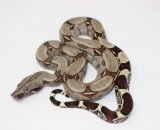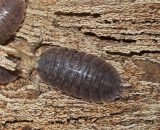Zebra Isopods (Strawberry Isopods, Porcellionides pruinosus) are small, terrestrial crustaceans that are native to the United States. They are popular among invertebrate enthusiasts due to their unique appearance and ease of care.
Appearance: Zebra Isopods have a striking appearance, with a distinctive black and white striped pattern on their exoskeletons. They are small, averaging around half an inch in length, and have a plump, oval-shaped body. They have seven pairs of legs, which they use to move around and dig burrows in the substrate.
Behavior: In the wild, Zebra Isopods are scavengers and detritivores, feeding on dead plant matter and other organic debris. They are nocturnal, and spend most of the day in their burrows to avoid predators. In captivity, they can be fed a variety of foods, including vegetables, fruits, and commercial isopod food.
Housing: Zebra Isopods can be kept in a variety of enclosures, including glass tanks, plastic bins, and even converted aquariums. They do not require a lot of space, and a 10-gallon tank can comfortably house a small colony. It is important to provide them with a substrate to dig in, such as coconut coir or soil, as well as hiding spots and climbing objects. They also require ventilation, so it is important to make sure the enclosure has a mesh top or holes for air circulation.
Temperature and humidity: Zebra Isopods prefer a temperature range of 70-80 degrees Fahrenheit and a humidity level of 70-80%. It is important to maintain these levels to ensure the health and well-being of your isopods. Using a heat pad or light source can help maintain the desired temperature, and misting the enclosure with water can help increase humidity.
Breeding: Zebra Isopods reproduce sexually, with females laying eggs that hatch into small, miniature versions of the adults. They can breed year-round, with females laying a few eggs at a time. It is important to provide them with a suitable substrate for the eggs to hatch in, such as coconut coir or soil. Once the eggs hatch, the young isopods will require the same care as the adults.
Conclusion: Overall, Zebra Isopods are a fascinating and easy-to-care-for pet that are suitable for both beginners and experienced invertebrate enthusiasts. With their unique appearance and low maintenance requirements, they make a great addition to any collection.
| Options | 10ct., 25ct., 50ct. |
|---|









Customer reviews
Reviews
There are no reviews yet.
Write a customer review